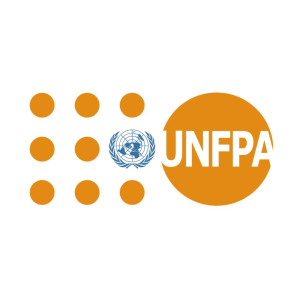
United Nations Population Fund (UNFPA)
Fonds des Nations Unies pour la population
Fondo de Población de las Naciones Unidas
Search Open Yearbook
This information is part of the Open Yearbook, a free service of UIA's subscription-based Yearbook of International Organizations (YBIO). It includes profiles of non-profit organizations working worldwide in all fields of activity. The information contained in the profiles and search functionality of this free service are limited.
The full-featured Yearbook of International Organizations (YBIO) includes over 72,500 organization profiles, additional information in the profiles, sophisticated search functionality and data export. For more information about YBIO, please click here or contact us.
The UIA is a leading provider of information about international non-profit organizations. The aim of the Open Yearbook is to promote the activities of international non-governmental organizations (INGOs) and intergovernmental organizations (IGOs).
Contact Details
URL: https://www.unfpa.org/
Facebook: https://www.facebook.com/UNFPA
Twitter: https://twitter.com/unfpa
Youtube: https://www.youtube.com/user/unfpa
Founded
1967-07
History
Became operational in 1969.
UN General Assembly resolution 3019 (XXVII), 18 Dec 1972, placed the Fund under its own authority, designating as governing body the Governing Council of E-XE3382 - UNDP (changed in 1993 to UNDP/UNFPA Executive Board).
Resolution 34/104, 14 Dec 1979, affirmed UNFPA as a subsidiary organ of the General Assembly of A-XA3375 - United Nations (UN), linked to E-XE3377 - ECOSOC, in the framework of F-XF1000 - United Nations System.
Current title adopted 11 Dec 1987, when UN General Assembly adopted ECOSOC decision 1987/175 of 8 Jul 1987, retaining the abbreviation UNFPA.
Aims
Promote the right of every woman, man and child to enjoy a life of health and equal opportunity; support countries in using population data for policies and programmes to reduce poverty and ensure that every pregnancy is wanted, every childbirth is safe, every young person's potential is fulfilled; advance the Programme of Action endorsed by the 1994 International Conference on Population and Development, emphasizing interdependence of population and development focusing on meeting individual needs rather than demographic targets; promote cooperation and coordination among UN system organizations, bilateral agencies, governments, non-governmental organizations and the private sector in addressing issues of population and development reproductive health, gender equality and women's empowerment.
Events
139 past events available with paid subscription only.Structure
Joint Executive Board with UNDP, under policy supervision of ECOSOC. Headquarters in New York NY (USA).
Languages
Available with paid subscription only.Staff
Available with paid subscription only.Finance
Available with paid subscription only.Relations with Inter-Governmental Organizations
Available with paid subscription only.Relations with Non-Governmental Organizations
Available with paid subscription only.Publications
Available with paid subscription only.Type I Classification
Available with paid subscription only.Type II Classification
Available with paid subscription only.Subjects *
Available with paid subscription only.UN Sustainable Development Goals **
UIA Org ID
XF5606
Last News
2023
** UN SDGs are linked to the subject classification.
← return to your search page to find additional profiles.
UIA allows users to access and make use of the information contained in its Databases for the user’s internal use and evaluation purposes only. A user may not re-package, compile, re-distribute or re-use any or all of the UIA Databases or the data* contained therein without prior permission from the UIA.
Data from database resources may not be extracted or downloaded in bulk using automated scripts or other external software tools not provided within the database resources themselves. If your research project or use of a database resource will involve the extraction of large amounts of text or data from a database resource, please contact us for a customized solution.
UIA reserves the right to block access for abusive use of the Database.
* Data shall mean any data and information available in the Database including but not limited to: raw data, numbers, images, names and contact information, logos, text, keywords, and links.